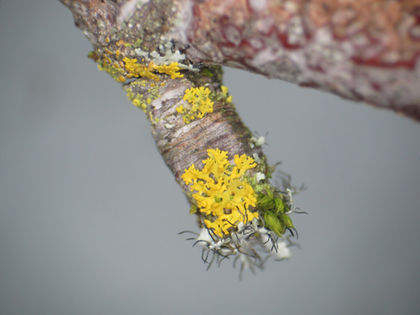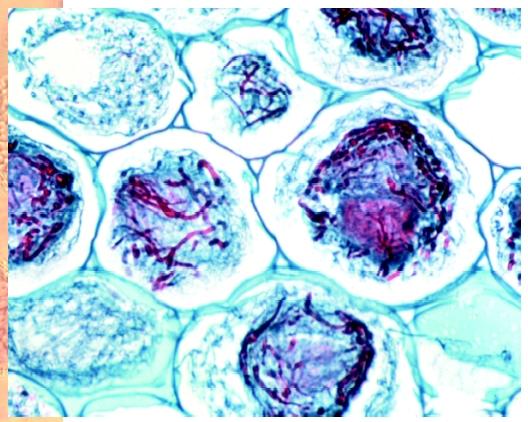Mycorrhizae

Symbioses are intimate associations between two unrelated organisms. Mycorrhizae are very common but largely unseen symbioses between plant roots and fungi that are important in plant nutrition, community structure, and nutrient cycling. Throughout the course of their evolution, plants and fungi have formed many different types of mycorrhizal partnerships involving most plant families and thousands of fungal species.
These diverse symbioses have been grouped into general types: arbuscular mycorrhizae, ectomycorrhizae, orchid mycorrhizae, and mycorrhizae

Mycorrhizae are critical for the mineral nutrition of many plants because threadlike fungal hyphae can exploit soil much more extensively than plant roots, and thus mycorrhizal associations greatly increase the absorption of minerals and water. Usually, mycorrhizal fungi supply minerals to their host plants, which reciprocate by supplying carbohydrates to their fungal associates, but there are a few exceptions. In orchids, and some chlorophyll-free plants in the order Ericales, the flow of carbon is reversed, and mycorrhizal fungi supply the plant with organic carbon derived from dead plant matter or from neighboring living plants.
Arbuscular mycorrhizae, the most common type, are associations between most crop plants, grasses, forbs , and many trees and fungi in the division Zygomycota, order Glomales. Both fossil and molecular evidence indicate that the earliest land plants had arbuscular mycorrhizal partnerships 450 million years ago. Ectomycorrhizae are commonly formed by woody shrubs and trees and a diverse array of fungi in the divisions Basidiomycota and Ascomycota. Pines and other forest trees often grow poorly or cannot survive in the absence of ectomycorrhizae.
Taxa of mycorrhizal fungi differ greatly in their effects on plant fitness. Consequently, interactions between communities of mycorrhizal fungi and plants may have strong impacts on the structure and function of communities and ecosystems .
Nancy Collins Johnson
Bibliography
Smith, Sally E., and David J. Read. Mycorrhizal Symbiosis, 2nd ed. San Diego, CA: Academic Press, 1997.
Comment about this article, ask questions, or add new information about this topic: